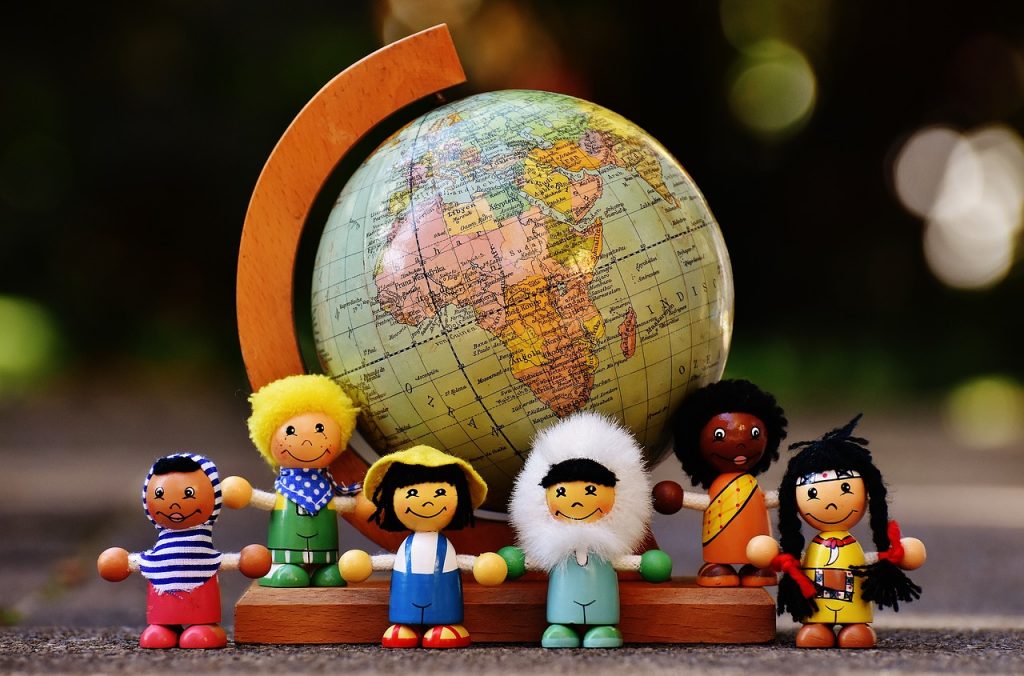Before going into the concrete aspects of accompanying young children, I would like to recall some of the founding elements of Montessori pedagogy. Some people think that Montessori is above all equipment, activities adapted to children.
But for me, the most important thing beyond the equipment is the way we look at the child. Before proposing things to a child, you must observe him, look at him to better understand what his real needs are. And in this observation, Maria Montessori helps us a lot.
A child’s development takes place in successive jumps
Maria Montessori’s vision of education, which I share, is above all education as an “aid to life”, an education that takes into account the fundamental needs of the child at different stages of his or her development. For Montessori (and others!), life is not linear.
It is experiences that make it possible to grow, to evolve and not the passing of time. The child develops in successive jumps. It goes through periods during which characters will develop, mature and then give birth to a different personality. She talks about birth and rebirth.
The 4 child development stages
To better understand her reasoning, Maria Montessori developed a complete vision of these steps, which she named the 4 development stages. These 4 stages can be found in other authors: Piaget, Freud.
The 4 development stages is a psychological approach to child development, for the educator or even for the parents a guide for the children, since it is from the knowledge of these periods that we will prepare an environment adapted to the child.
Some of you may already know them, but I think it would be useful to remind you of them.
- 1st development stage, from birth to 6 years of age: early childhood
- 2nd development stage, from 6 to 12 years old: childhood
- 3rd development stage, from 12 to 18 years old: adolescence
- 4th development stage, from 18 to 24 years old: maturity
In each stage there are 2 phases:
- A creative, progressive phase
- A phase of maturation, character confirmation, refinement
Indeed, the child needs time off to integrate, digest, metabolize what he has observed, absorbed. It cannot always be active. Excessive stimulation causes overexcitement, frustration, uneasiness.
Understanding child development
Maria Montessori has developed a dynamic diagram of these development stages, which makes it possible to better understand, beyond their succession, the specificities of each stage and how they relate to each other. It is the famous schema of the “bulb”, which presents the importance of the 1st development stage (the one that is the subject of this blog), in particular because it also formalizes prenatal life.

On this diagram we have 3 colors. Black is unconscious construction, black metaphorically evokes the fact that development is very hidden, invisible to the naked eye. Red is the visible construction, intense period. Green represents a more peaceful development.
The X is the unknown, to symbolize that there will always be a part of the unknown in humanity.
The bottom graph represents traditional education, and shows that it does not take into account the characteristics of children at different periods of their lives, since they begin at 6 years of age, and that the older they grow, the more they have to learn.
Maria Montessori started the connections with the educational system on the Bulb at the nursery school. She indicates the names of the great educators associated with each structure, since the adult’s role is to build this favourable environment.
The environment must adapt to the child at each period, so that the child who has become an adult is able to adapt and act on his environment when he has become mature. Indeed, even if the child has in him from birth a certain equipment, an inner strength that will allow him to build himself, it is not enough, he needs a favourable environment that will allow him to develop this strength, an environment in which a child can make experiences that will nourish him.
In the next post, I will come back to the first development stage in more detail. See you soon!


